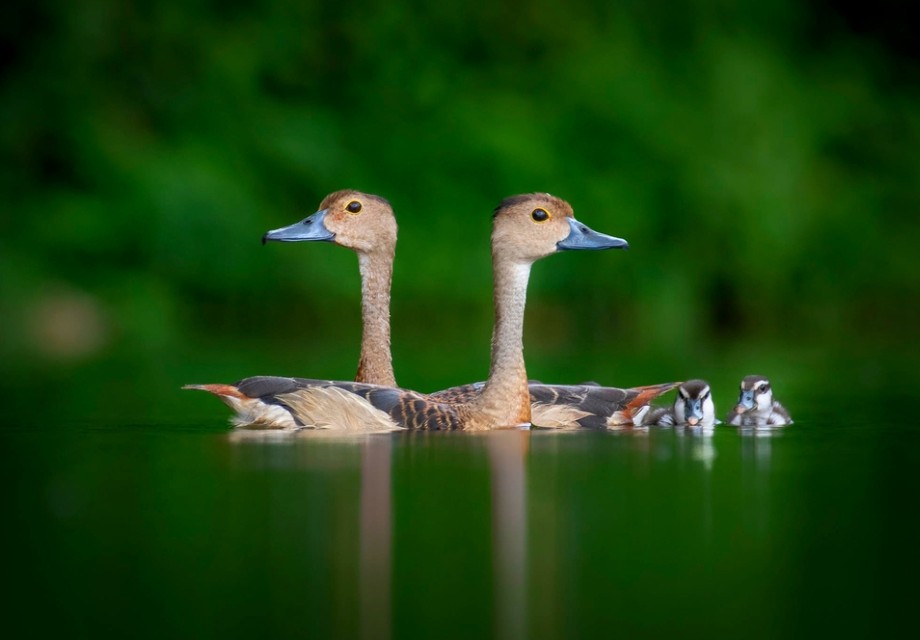Fun Facts About Ducks and Their Habitats

Ducks are some of the most adaptable and fascinating birds in the world, thriving in a variety of habitats from peaceful ponds to fast-flowing rivers and even coastal waters. These waterfowl are known for their waterproof feathers, unique feeding behaviors, and impressive migratory journeys. Whether dabbling at the surface or diving deep for food, ducks play a vital role in maintaining healthy ecosystems. In this collection of fun facts, we’ll explore what makes ducks so special, from their incredible vision and sleeping habits to the diverse environments they call home.
Fun Facts About Ducks
- Waterproof feathers. Ducks stay dry and buoyant thanks to a special oil produced by their uropygial gland, located near their tails. This oil coats their feathers, creating a waterproof barrier that repels water. By regularly preening, ducks ensure their feathers remain clean, insulated, and resistant to moisture, helping them thrive in aquatic environments.
- Spinning for food. Some ducks, like the northern shoveler, use a unique feeding strategy by spinning in circles on the water. This motion creates a vortex that stirs up insects, crustaceans, and plants, making it easier for them to scoop up food with their specialized beaks. This efficient technique helps maximize their foraging success.
- All-purpose beaks. Ducks have diverse beak shapes adapted to their specific diets, allowing them to thrive in various habitats. Dabbling ducks, like mallards, have broad, flat beaks ideal for filtering plants and small creatures from the water’s surface. Diving ducks, such as Mergansers, possess narrow, serrated beaks designed for catching fish and insects.
- Mating for life (sometimes). While most ducks form new pairs each breeding season, some, like the wood duck, may reunite with the same mate year after year. These long-term bonds help ensure successful nesting and chick-rearing. By staying together, these ducks strengthen their partnership, increasing their chances of survival and raising healthy offspring.
- 360° vision. Ducks have incredible peripheral vision, allowing them to see nearly 360 degrees around their heads. Their eyes are positioned on the sides of their heads, giving them a wide field of view to detect predators and find food. This exceptional eyesight helps ducks stay alert and navigate their surroundings with ease.
- Sleep with one eye open. Ducks have a unique ability to sleep with one eye open by resting only half of their brain at a time. This adaptation, called unihemispheric slow-wave sleep, allows them to stay alert for predators while still getting the rest they need, making them highly adaptable in various environments.
- Fast flyers. The red-breasted merganser holds the title for the fastest duck, reaching impressive speeds of up to 100 mph in flight. Known for its sleek body and powerful wings, this speedy waterfowl is built for agility, allowing it to escape predators and cover long distances during migration with incredible efficiency.
- Migratory masters. The northern pintail is one of many duck species that migrate thousands of miles between breeding and wintering grounds. These long-distance travelers navigate vast landscapes, crossing continents to find ideal habitats. Their incredible endurance and navigation skills help them survive seasonal changes, ensuring access to food, nesting sites, and warmer climates.
Duck Habitats
- Wetlands. Ducks thrive in wetlands, including marshes, swamps, and ponds, which provide abundant food and shelter. These habitats offer aquatic plants, insects, and small fish for sustenance, while dense vegetation protects them from predators. Wetlands are essential for duck survival, serving as breeding, nesting, and resting areas throughout the year.
- Rivers and streams. The common merganser thrives in fast-moving rivers and streams, where it hunts for fish with its sharp, serrated beak. These agile swimmers are excellent divers, using their speed and precision to catch prey. Their preference for clean, flowing water makes them important indicators of a healthy aquatic ecosystem.
- Lakes and ponds. Dabbling ducks, such as the mallard, flourish in freshwater lakes and ponds, where they feed on aquatic plants, insects, and small invertebrates. Instead of diving, they tip forward to forage near the surface. These calm, nutrient-rich waters provide ideal nesting sites, food sources, and protection from predators.
- Coastal waters. Sea ducks, like eiders and scoters, thrive along ocean shores, where they dive beneath the waves to feed on shellfish. Their specialized beaks and strong diving abilities allow them to catch mussels, clams, and other marine creatures. Adapted to saltwater environments, these hardy ducks withstand harsh coastal conditions year-round.
- Arctic tundra. The long-tailed duck is among the species that breed in the Arctic’s cold, remote regions but migrate south for the winter. These hardy birds travel vast distances to find open water, where they dive for food. Their seasonal migrations help them adapt to changing climates while ensuring access to resources year-round.
- Rice fields and farmlands. Ducks frequently visit agricultural fields, where they forage on spilled grains, seeds, and insects. These areas provide an abundant food source, especially during migration and winter months. By feeding in farmlands, ducks help control insect populations and disperse seeds, playing a valuable role in the ecosystem and agricultural landscapes.
Ducks are truly remarkable birds, bringing life to wetlands, lakes, and rivers all around the world. Their unique adaptations, fascinating behaviors, and diverse habitats make them an essential part of nature’s balance. Whether they’re soaring through the sky, gliding across the water, or foraging for food, ducks continue to amaze and inspire. Next time you spot a duck, take a moment to appreciate the incredible qualities that make these feathered friends so special!


